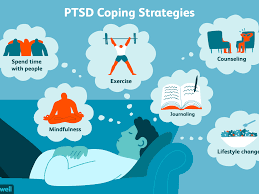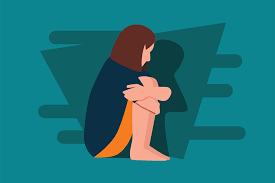

Post-traumatic stress disorder (PTSD) is a disorder that some people who have experienced/witnessed a shocking, scary, or dangerous event, develop after some time.
PTSD was once referred to as the Battle Fatigue Syndrome and this was because the first case of PSTD was brought to the attention of the medical community by war veterans. People experience fear, shock, or trauma and recover from it but when the fear or the shock doesn’t thin out, PTSD is developed.
It is a serious health condition that needs to be taken care of once the diagnosis is made. PTSD is a long-lasting consequence of a traumatic encounter that causes intense fear, shock, or horror, and grief.
Things that can lead to PTSD include sexual or physical assault/bully, the unexpected death of a loved one, an accident, war, or natural disaster. Someone who survived or the families of victims can develop PTSD, same as emergency personnel and rescue workers.
What are the symptoms of PTSD?
Symptoms usually start within 3 months of the incident while some might not begin until years later. The severity and duration of the illness also vary- some people recover within 6 months of the symptoms while in some other persons, it could last much longer.
The symptoms of PTSD often are grouped into four main categories, including:
Reliving: People with PTSD repeatedly recount the ordeal through thoughts and memories of the trauma. These may include flashbacks, hallucinations, and nightmares.
Avoiding: People with PTSD start to avoid people, places, thoughts, or situations that may remind them of the trauma. This can lead to isolation from family and friends, as well as a loss of interest in activities that the person once enjoyed.
Increased Arousal: The person suffering from PTSD can develop problems relating to others, including feeling or showing affection; some have difficulty falling or staying asleep; irritability; anger; difficulty focusing; and easily startled. They may also suffer increased blood pressure and heart rate, rapid breathing, muscle tension, nausea, and diarrhea.
Children can also suffer from PTSD and they may have delayed development in areas such as toilet training, motor skills, and language.
PTSD Diagnosis
PTSD isn’t diagnosed until at least 1 month has passed since the traumatic event happened. If symptoms of PTSD are present, the doctor will begin the diagnosis by performing a complete medical history and physical exam. Although there are no lab tests to specifically diagnose PTSD, the doctor may use various tests to rule out physical illness as the cause of the symptoms.
How to Treat or Manage PTSD
PTSD treatment is to reduce the emotional and physical symptoms, improve daily activities, and help the person better manage the event that triggered the disorder. Treatment for PTSD may involve psychotherapy (a type of counseling), medication, or both. Massage is also good and effective in managing PTSD.
Medication
Doctors use certain antidepressant medications to treat PTS and to control the feelings of anxiety and its associated symptoms.
Psychotherapy
Psychotherapy involves helping the person learn skills to manage symptoms and overcome their fears.
Complications of PTSD
PTSD can cause problems in every aspect of a person’s life, which include jobs, relationships, health, and everyday activities. It may also cause the development of other mental health problems, such as:
Depression and anxiety
Drug or alcohol abuse
Eating disorders
Suicidal thoughts and actions
How To Avoid PTSD
- Stay away from things, places that trigger it
- Avoid alcohol and drug abuse
- Proper orientation in children
- Talk to someone about your problems and fears
- Process your grief well, cry it all out if you feel like it
- Let go of traumatic thoughts
- Learn to recognize triggers and stay away from them
- Find a therapist
